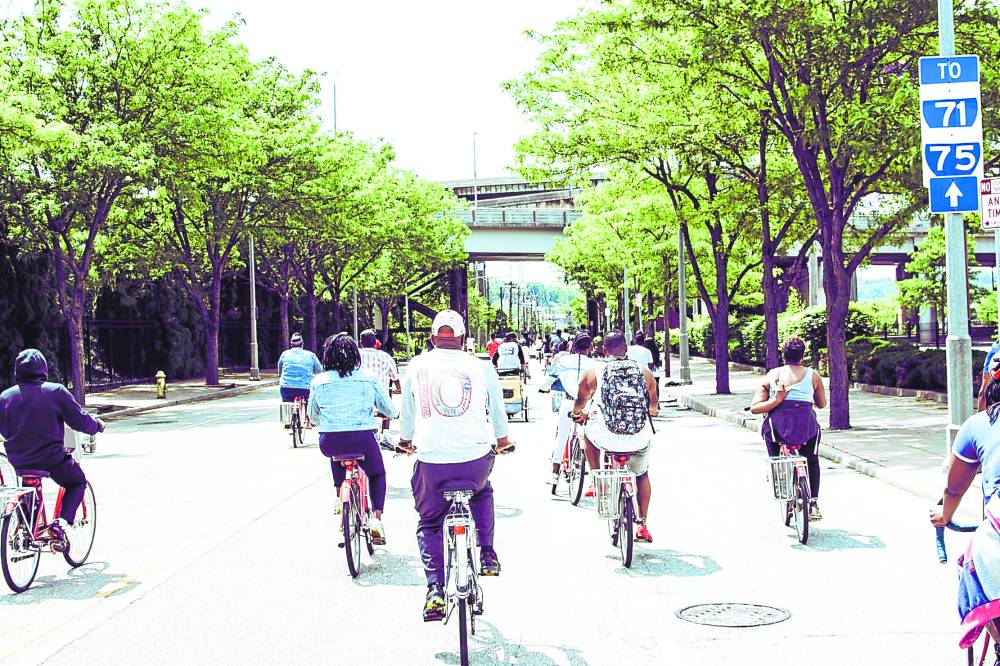Is there hope for a Philippine 15-minute city?
How far can you go in a span of 15 minutes?
For many of us who live in congested cities, our answers may be quite limited. In 15 minutes, some of us may find ourselves still squeezed in a jampacked elevator or stuck in traffic. Would you believe, however, that in some cities some people would have already traveled to the grocery, finished their shopping, and returned home—all in 15 minutes?
This scenario of easy accessibility is the ideal life for everyone, according to the Colombian urbanist Carlos Moreno. A professor at IAE- Paris Sorbonne, he introduced the concept of the “15-minute city” at the Paris United Nations Climate Change Conference.
The idea is exactly what its name suggests: everything we need to live should be within a 15-minute walk or cycle. As simple as it may sound, however, this concept is quite difficult to apply in our existing cities. Still, there is hope, as many cities in the world are starting to work toward this ideal living.
Get everything in 15 minutes
The concept found fans among city mayors globally. By improving accessibility across neighborhoods, the concept also promotes sustainable living and decentralization of urban areas. It lessens the need for vehicles and paves the way for less roads and more parks.
Article continues after this advertisementIn such a city, offices, schools, and other institutions would be situated just a few minutes away from your home. You can easily bring your kids to school on your way to work, or even go home together for lunch.
Article continues after this advertisement
The 15-minute city is a place where essentials and amenities can be reached by walking or cycling in 15 minutes.
Beyond proximity, however, the 15-minute city also relies on other factors to ensure its success.
First, it requires the right density of inhabitants, just enough to sustain businesses without overpopulating the city. Second, it also pushes for diversity, with mixed-use buildings catering to numerous needs. Besides these, the city also benefits from digitalization of activities to speed up daily tasks. Human scale design must be taken into consideration. Cities must be built for people, not for cars.
Another factor is flexibility, as spaces should cater to various activities throughout the day. Lastly, connectivity is important, ensuring that cities are easily reachable through efficient public transportation.
Promising benefits
The 15-minute city concept ensures that the daily needs of everyone, including senior citizens and persons with disabilities, are met. It helps lower housing costs by supporting numerous neighborhoods; promote homegrown businesses; reduce transportation costs; and save the environment by cutting the need for vehicular travel while promoting cycling and walking.
Is it even possible?
Realistically, it is difficult to redesign existing cities, especially ones that already feature a multitude of urban problems. By starting small, however, many cities have already demonstrated that the 15-minute city can be a reality that any place could strive to achieve.
Paris, for example, is making numerous strides toward this ideal concept of living. Through the initiative of Mayor Anne Hidalgo, urban farms are being cultivated across the city in existing rooftops, walls and facades. Approximately one third of these cater to edible plants, providing citizens new sources of their daily nutrition. Sheep are also being re-introduced in the city to enhance biodiversity and improve soil quality. Lastly, the La REcyclerie was established in an abandoned train station. Relying on volunteers, this place offers free appliance repairs, seed swaps and other community activities.
Glasgow, Scotland is another place that is making the effort to become a 15-minute city. “Parklets” are being built across the metropolis, with corners of car parks and pavements being turned into mini grasslands. Pop-up cycling lanes are being introduced to encourage more people to bike on a daily basis.
In Asia, one city supporting the 15-minute initiative is Busan in South Korea. Known as the “San Francisco of North Korea,” this city is known for being the technology and communication hub of the country.
Mayor Park Hyung-joon has rolled out the “Happy Challenge” which aims to follow the principle of the 15-minute concept. Infrastructure was improved in various neighborhoods to improve walkability and public spaces. Diverse districts were selected to try out new systems of local management. Private and public partnerships were encouraged to develop an independent local government that promoted community involvement at the same time.
By actively encouraging all citizens to participate in the initiative, the city aims to identify neglected issues and meet the daily needs of all citizens over time.
Hope for our country
Despite the challenges, you’ll be pleased to know that some Philippine cities are starting to explore the 15-minute initiative.
Quezon City, for example, has started mapping barangays to determine urgent community needs and develop walkable areas. Pasay City is also developing the “Pasay 360 Project” which aims to follow the principles of Carlos Moreno in an upcoming, 360-hectare development.
Overall, the 15-minute city is a simple concept that offers numerous benefits to us, the economy and the environment. Let us do our part in chasing this ideal setup for the benefit of future generations.
Sources:
Sonny Vermeer, Shvets Anna, Ahshea1 Media and Wendy Wei via pexels.com; https://unfccc.int; https://sustainableurbandelta.com; https://nextcity.org; https://quezoncity.gov.ph; https://thecityrat.com; “Is 15 Minute City the Future of Urban Living?” Urban Design Lab via Youtube.com. Uploaded 31 July 2023. Accessed 04 July 2024. https://youtu.be/a1tUy8uqlOE?si=iMxwcja9o4qAdEGB


